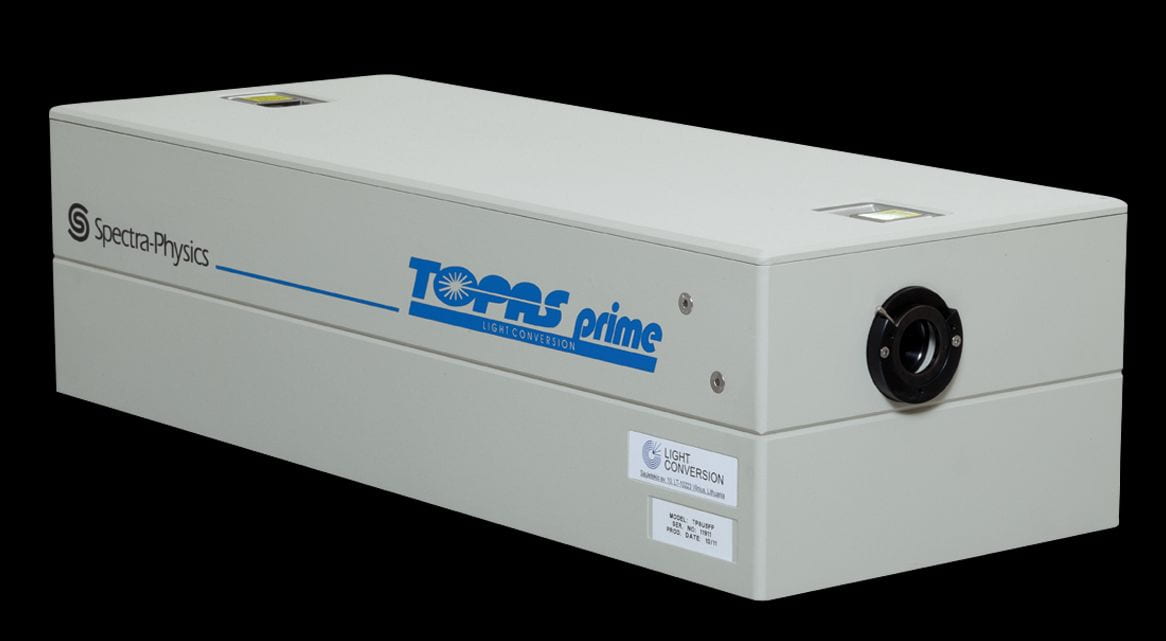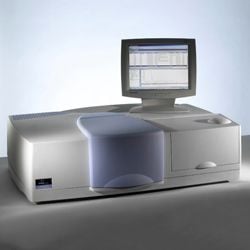
Overview of the facility panorama
Fee schedule

(t) – training offered; (s) -self use (after training or for experienced user); (a) – assisted use
All instruments are subject to minimum 1h usage fee (if used for less than 1 h) otherwise actual usage recorded in facility log book is used and cost is calculated according to
$ = Instrument rate x [Total minutes]/60
All instruments marked as (a) (transient absorption and so on) are coupled with some type of ultrafast laser or laser-OPA(OPO) setup. Laser usage fee is already included in the instrument fee.
All accessories (liquid nitrogen variable temperature cryostats – scroll down for details) are charged $5/h of usage.
To book instrument time send request to niedzwiedzki@wustl.edu or call facility: 314-935-8483
In this facility we perform following spectroscopic measurements/studies:
- Transient absorption (TA)
Small volume liquid or solid samples, thin films, flow through samples. Measurements at room temperature and down to 77 K available. For time window: 0-7 ns, three spectral ranges available (350-750 nm, 450-800 nm, 850-1600 nm) with temporal resolution ~200 fs. For time window 0-400 μs (can be extended to few ms), spectral range 350-950 nm and temporal resolution of 1 ns. Tunable excitation from ultra-fast amplifier in the range of 285-2000 nm.
- Time-correlated single photon counting (TCSPC)
Small volume liquid sample and thin films. Measurements at room temperature. Single channel detection with instrument response function ~200 ps. Red-extended MCP detector with usable sensitivity up to 900 nm. Tunable excitation from ultra-fast laser.
- Time-resolved emission imaging
Small volume liquid or solid samples, thin films, flow through samples. Measurements at room temperature and down to 77 K available. Incremental time range windows with the smallest of 0-100 ps. Temporal resolution ~7 ps for the shortest time window. Spectral detection up to 900 nm. Tunable excitation from ultra-fast laser.
- Time-gated weak emission recording
Small volume liquid or solid samples. Measurements at room temperature and down to 77 K available. Used for measurements of time-gated extremely weak emission like phosphorescence. Excitation provided at fixed 350 nm, temporal resolution of ~6 ns.
Detailed description of facility instrumentation with vendor links (if available):
LASER SYSTEMS
Solstice – a regenerative amplified laser
An integrated ultrafast laser system based on Spectra-Physics (USA) components, made up of Solstice, a 1 kHz one box ultrafast amplifier containing Spitfire Pro XP, a Ti:Sapphire regenerative amplifier with a pulse stretcher and compressor, Mai-Tai, a femtosecond oscillator, and Empower, a diode-pumped solid-state pulsed green laser.
Frequency: 1 kHz (can be tuned to lower for transient absorption in EOS spectrometer)

Topas-Prime – Optical parametric amplifier (OPA)
An ultrafast optical parametric amplifier equipped with extension for generation of light in spectral range between 285 and 2000 nm (Light Conversion Ltd, Lithuania).
Frequency: coupled to output from Solstice

Inspire 100 – Optical parametric oscillator (OPO)
An ultrafast optical parametric oscillator (Radiantis-Spectra-Physics, USA) coupled with Mai-Tai oscillator (as a feed) and Laser pulse selector 3890 (Spectra-Physics, USA) to slow repetition rate when needed.
Frequency: 80 MHz, could be lowered by (1,2,3,.. x 10) division

DETECTION SYSTEMS
Time-resolved Spectrometers
Helios – femto-second transient absorption spectrometer
Description: Femtosecond time-resolved (~200 fs temporal resolution) transient absorption spectrometer with ability to record in 350-1600 nm spectral range (350-750, 450-800 and 850-1600 nm spectral windows of choice) and 0-8 ns temporal window. The spectrometer is coupled to 1 kHz amplified laser system (Solstice, Spectra-Physics) and uses Topas-Prime (Light Conversion), an ultrafast optical parametric amplifier as excitation source (285-2000 nm, no gaps). If needed, accommodates Janis VNF cryostat for cryogenic measurements at 77 K.

EOS – nanosecond transient absorption spectrometer
Description: nanosecond time-resolved (1 ns temporal resolution) transient absorption spectrometer with ability to record in 350-950 nm spectral range and 20 ns – 400 μs time window while operating with 1 kHz amplified laser system (Solstice, Spectra-Physics). The timel window may be expanded to millisecond time domain with lower laser repetition that eventually elongates measurement time. As excitation source it uses Topas-Prime (Light Conversion), an ultrafast optical parametric amplifier (285-2000 nm, no gaps) fed by Solstice amplified laser system from Spectra-Physics. If needed, accommodates Janis VNF cryostat for cryogenic measurements at 77 K.
Sub-nanosecond time-correlated single photon counting setup

Description: Time-correlated single photon counting (TCSPC) setup based on Becker & Hickl Simple Tau-130 hardware, equipped with Cornerstone Oriel monochromator and filter wheel. Instrument response function of ~200 ps, ideal for fluorescence, luminescence lifetime recording. The setup uses femtosecond laser system (as excitation source) consisting of Mai-Tai HP, a femtosecond oscillator and Inspire100, an ultrafast optical parametric oscillator (Spectra-Physics) with tunable excitation wavelength and frequency.
Detector: MCP (multi-channel plate) PMC-100-20
Pico-second time-resolved emission imaging system
Description: Picosecond time-resolved fluorescence lifetime imaging system, consisting an universal streak camera C5680 from Hamamatsu (Japan) with cooled N51716-04 streak tube, a digital Orca2 CCD camera and Bruker spectrograph with 3 gratings of choice. Simultaneous recording of emission decays at multiple wavelengths. The setup uses femtosecond laser system (as excitation source) consisting of Mai-Tai HP, a femtosecond oscillator and Inspire100, an ultrafast optical parametric oscillator (Spectra-Physics) with tunable excitation wavelength and frequency. If needed, accommodates Janis VNF cryostat for cryogenic measurements at 77 K.

Streak camera detailed specifications
Slow-repetition flash photolysis spectrometer

Flash photolysis spectrometer LP920-K/S from Edinburgh Instruments (UK) .
Description: Flash photolysis spectrometer equipped with Andor ICCD camera and coupled to Vibrant 355 (Opotek) nanosecond laser system. The system is currently set to be excited at fixed 350 nm wavelength and detect in spectral emission mode. Ideal for time-gated detection of weak emission signals like phosphorescence and separate it from strong but fast decaying emission signals like fluorescence. Can be used to measure both types of spectra within the same session. If needed, accommodates Janis VNF cryostat for cryogenic measurements at 77 K.
Newer version product (LP980) website
Steady-State Mode Spectrophotometers
Shimadzu UV-1800 – a UV-VIS spectrophotometer (absorption)
Description: UV-VIS spectrophotometer for liquid, solid and thin-film samples. Spectral range 190-1100 nm. Works in either absorbance or transmittance mode depending on user preference. Fully computer controlled via UVprobe 2.61 software. Data exportable to ASCII or TXT formats. If needed, accommodates Janis VNF cryostat for cryogenic measurements at 77 K. Product website
Product website
Perkin-Elmer Lambda 950 – a UV-VIS-NIR spectrophotometer (absorption)
Description: UV-VIS-NIR spectrophotometer for liquid, solid and thin-film samples. Spectral range 190-3000 nm. Works in either absorbance or transmittance mode depending on user preference. Fully computer controlled. Data exportable to ASCII or TXT formats. If needed, accommodates Janis VNF cryostat for cryogenic measurements at 77 K

Shimadzu RF-6000 fluorometer (fluorescence, luminescence)
Description: Fluorometer ideal for fluorescence and various types of luminescence measurements of liquid or solid thin films samples. Scanning in excitation or Emission mode corrected for instrument response. Availability of fluorescence quantum yield and fluorescence quantum efficiency measurements. Availability of 3D excitation/emission scans with a high speed. Large choice of optical filters (band pass, long or short pass) available with instrument.

Accessories
Accessories held in the facility – Janis VNF-100 (USA) and Oxford Optistat (UK), liquid nitrogen variable temperature cryostats that if needed may be implemented to all measuring instruments. These allow performing spectroscopic measurements in controllable temperatures down to 77 K.

Janis VNF series no longer available